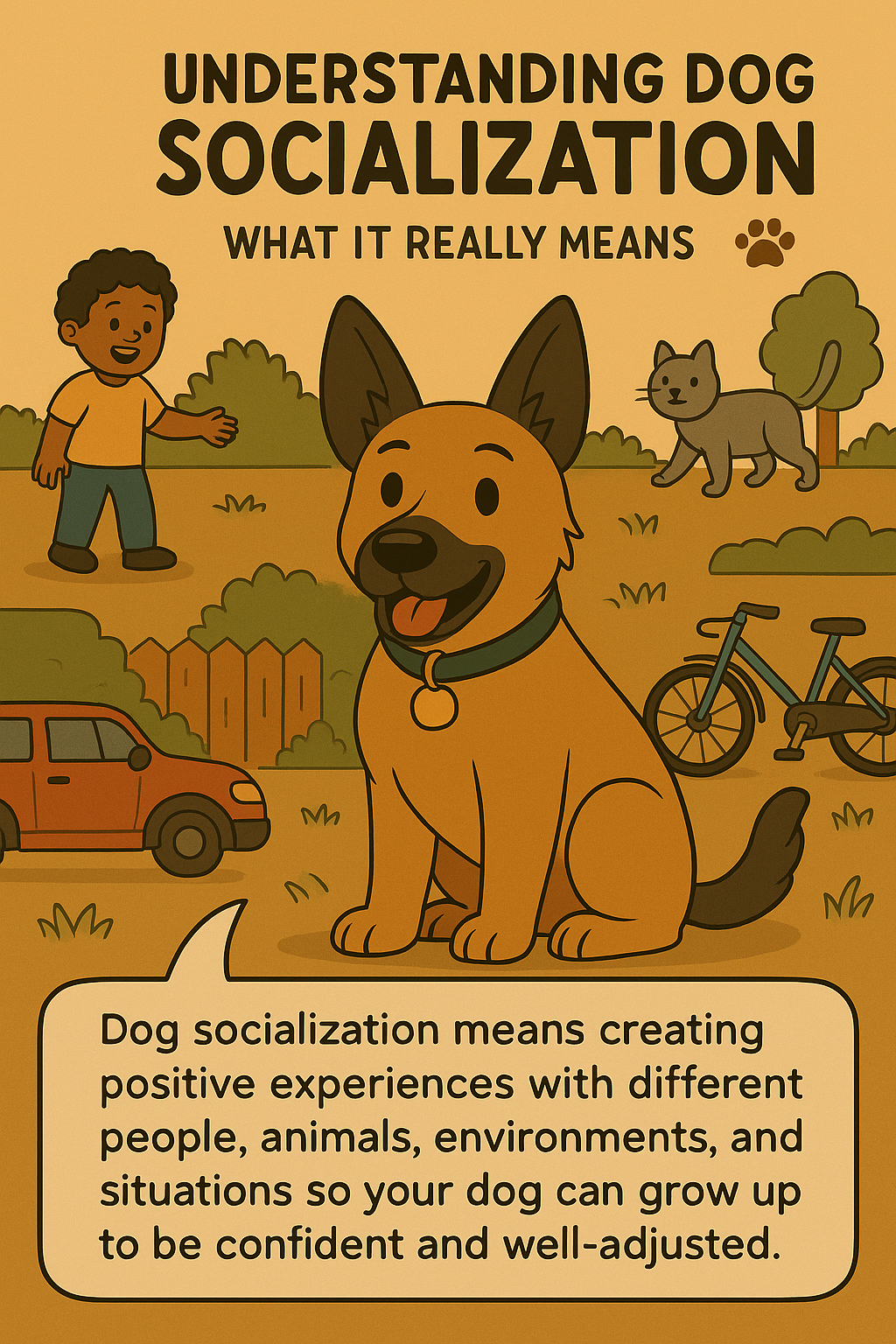
Understanding Dog Socialization: What It Really Means
Share
When it comes to raising a well-behaved, confident dog, socialization is one of the most important aspects of training. But what exactly does socialization mean, and why is it so crucial for your dog’s development?
Dog socialization goes far beyond just letting your puppy play with other dogs or meet new people. It’s about creating positive experiences with a wide range of environments, situations, people, and animals, so your dog can grow into a confident, well-adjusted adult. Socialization shapes how your dog handles the world, helping them avoid fear, anxiety, or reactivity when faced with something new.
What Socialization Really Means
At its core, socialization is the process of exposing your dog to a variety of stimuli, people, animals, places, sights, sounds, while ensuring each interaction is safe and positive. The goal? To help your dog respond calmly and confidently, not fearfully.
Socialization includes experiences like:
-
Meeting people of all ages and appearances (children, seniors, people in hats or uniforms)
-
Interacting with other dogs or pets
-
Walking in different environments (city sidewalks, forest trails, busy markets)
-
Hearing loud or unexpected sounds (sirens, vacuums, traffic)
-
Being exposed to everyday objects (umbrellas, bicycles, wheelchairs)
-
Traveling in vehicles or public transit
It’s not just about exposure, it’s about creating positive associations with these new experiences.
The Importance of Early Socialization
The most critical time for socialization is between 3 and 16 weeks of age, a sensitive period when puppies are especially open to new experiences. Puppies who miss proper socialization during this window are more likely to develop fears, anxiety, or aggressive tendencies later in life.
That said, it’s never too late. Older dogs can still benefit from thoughtful, positive socialization. It may take more time and patience, but confidence can be built at any age.
Socialization Builds Confidence
Confidence is the key to a well-behaved dog. Confident dogs are more relaxed, resilient, and open to learning. They’re less likely to become reactive, anxious, or fearful in unfamiliar situations.
Let your dog set the pace. Some will bounce into new situations with curiosity, while others need more time. Never force it. Gradual, low-pressure exposure is far more effective than overwhelming your dog.
Common Socialization Mistakes
-
Overloading your dog: Too much too fast can backfire. Keep sessions short, positive, and pressure-free.
-
Forcing interactions: Don’t push your dog into meeting new people or dogs before they’re ready.
-
Narrow exposure: Socializing only with dogs? Don’t forget sights, sounds, and human variety.
-
Skipping rewards: Reinforce every calm, confident behaviour with praise, treats, or toys.
How to Socialize Your Dog
-
Start small: Choose quiet settings to begin, then gradually introduce more distractions.
-
Use positive reinforcement: Treats, praise, and toys help build strong, happy associations.
-
Expose them regularly: Visit new places, meet new people, and try new routines often.
-
Join a class: Group classes offer controlled exposure and the bonus of guided training.
-
Respect boundaries: If your dog needs a break, give them one. Safety and trust come first.
The Benefits of Socialization
-
Reduced fear and anxiety
-
Improved behaviour and focus
-
Easier vet visits, grooming, and travel
-
Better relationships with other animals and people
-
A stronger bond between you and your dog
Socialization is a lifelong journey, but the foundation you build early makes all the difference. With consistency, patience, and a sprinkle of fun, you’ll help your dog become a confident, calm, and adventure-ready dog.